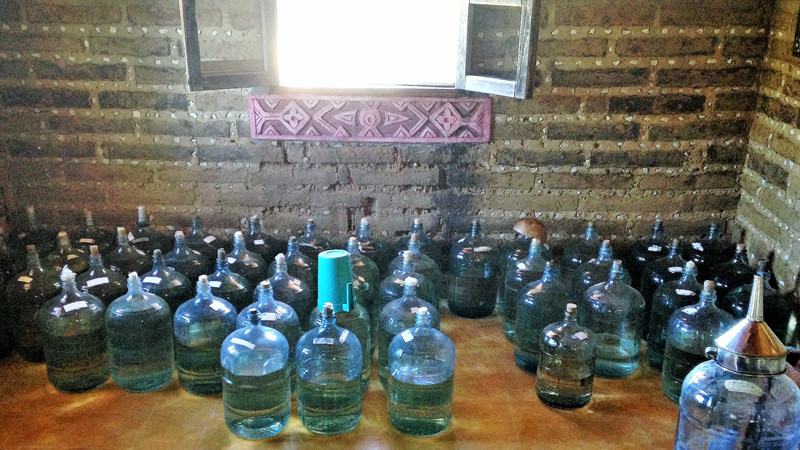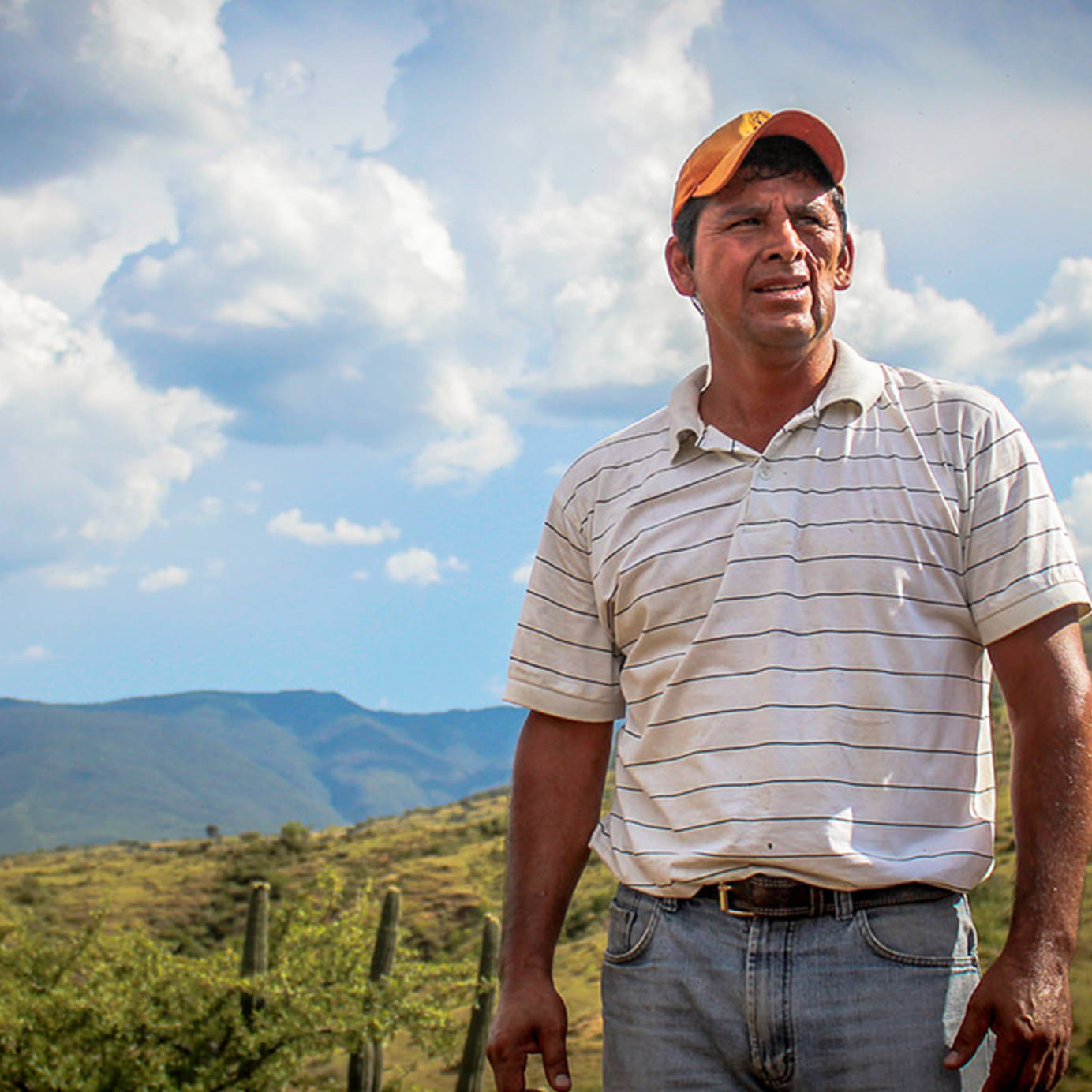The small town of Santa Catarina Minas, about an hour south of Mexico’s Oaxaca City, has mezcal roots that predate the Hispanic period. Fourth-generation master mezcalero, Eduardo (Lalo) Ángeles (pictured, above), left his family’s Real Minero mezcal operation in 2014 to form his own, Mezcal Lalocura.
At Lalocura, Ángeles produces over 20 expressions of the smoky agave liquor from both domestic espadín and wild agave varieties like tobasiche and cuishe. Unlike some distilleries that use horse-drawn mill stones to crush the fire-roasted agave, Lalocura’s agave is mashed by hand, as it would have been in an era before horses arrived in Mexico.
The community of Santa Catarina Minas runs a nursery for local mezcal producers like Lalocura. Here they grow several species of agave, including wild varieties that are collected as seeds in the mountains and coaxed into seedlings in the greenhouse.
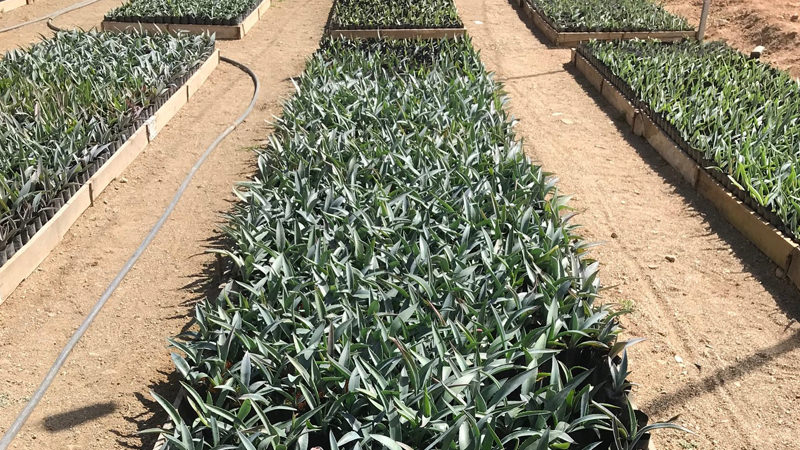
Don't Miss A Drop
Get the latest in beer, wine, and cocktail culture sent straight to your inbox.
On the Lalocura plantation, agave seedlings are planted in rows. It will take them seven to 15 years to mature to the point of harvest, depending on the species. Earthen pots that crack from use in the distilling process are discarded here in the field.
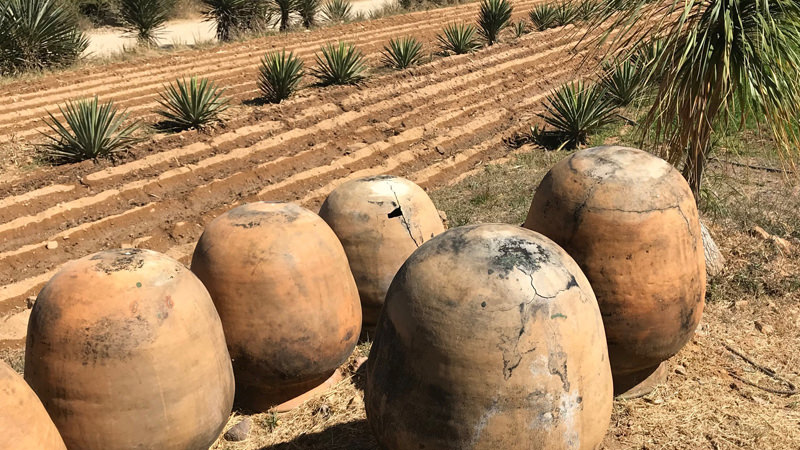
The agave used in mezcal goes through a lengthy roasting process. The freshly cut hearts of the mature plant are placed on top of stones over an open fire, then covered with earth and left to smolder for up to three days.
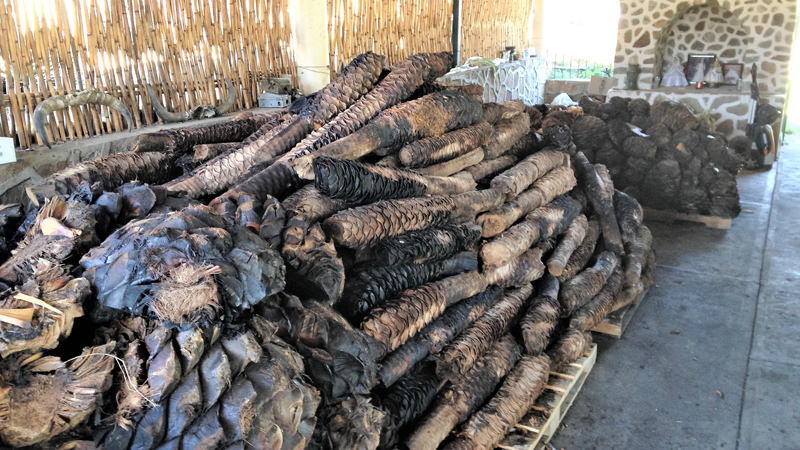
At Lalocura, workers use pounding sticks to pummel the roasted agave into small, fibrous pieces. This mash releases the juices needed for fermentation.
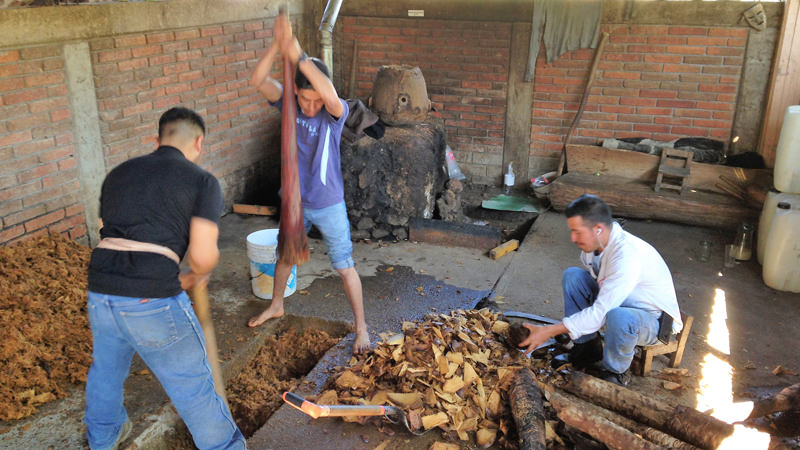
Water is added to the agave mash, which is left to ferment in large open-air barrels for at least a month. Small wooden crosses are placed in each fermenting barrel to bless the mixture.
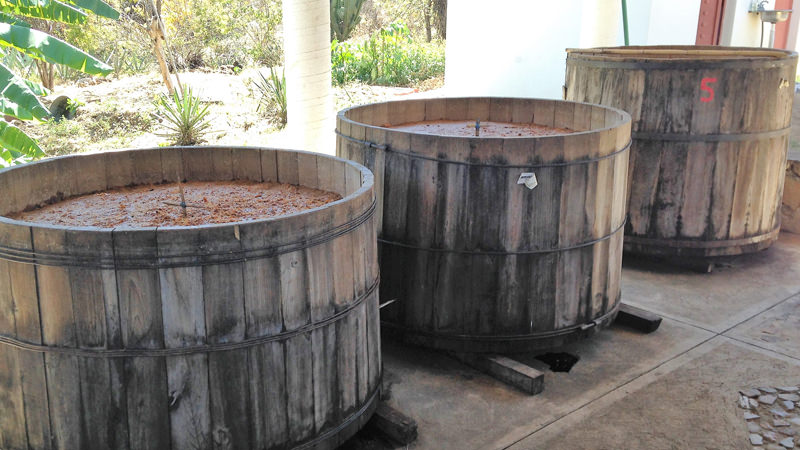
The fermented agave goes through two rounds of distillation. The first produces a 75 proof liquor. After the second distillation, the mezcal reaches around 110 proof (55 percent alcohol content).
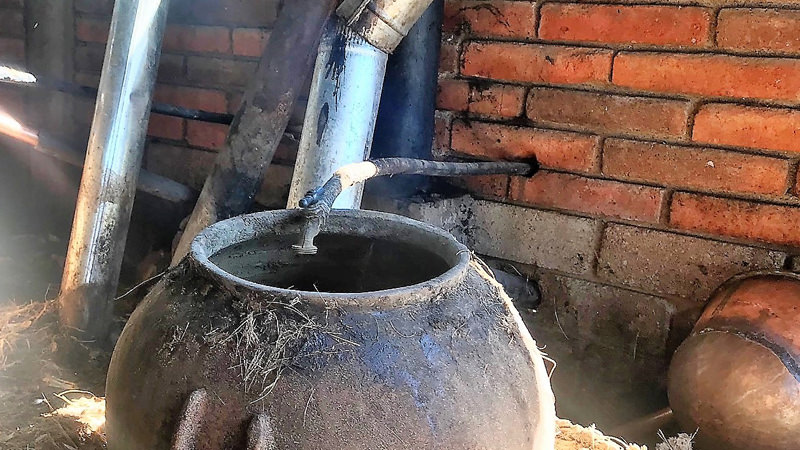
The clear, smoky mezcal, which Lalocura makes in over 20 different expressions, is collected in jugs lined up in Ángeles’ living room to await bottling.
